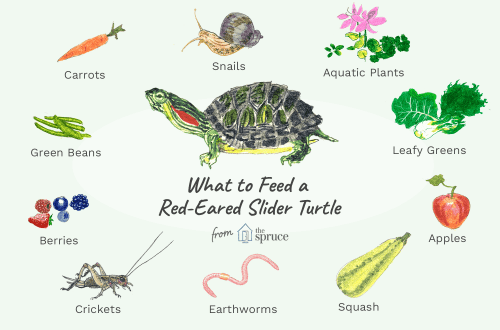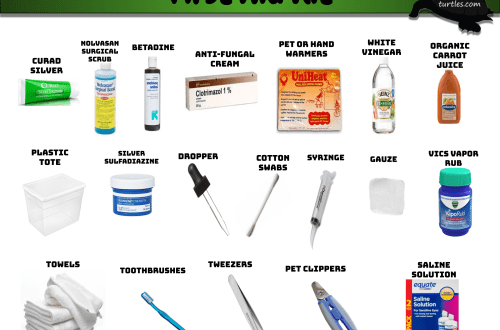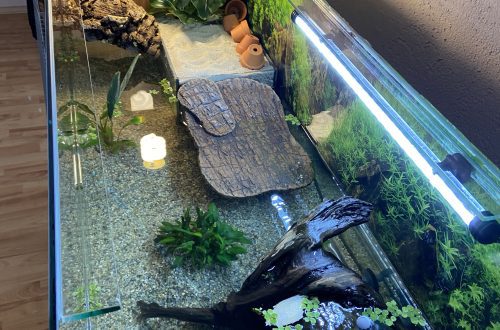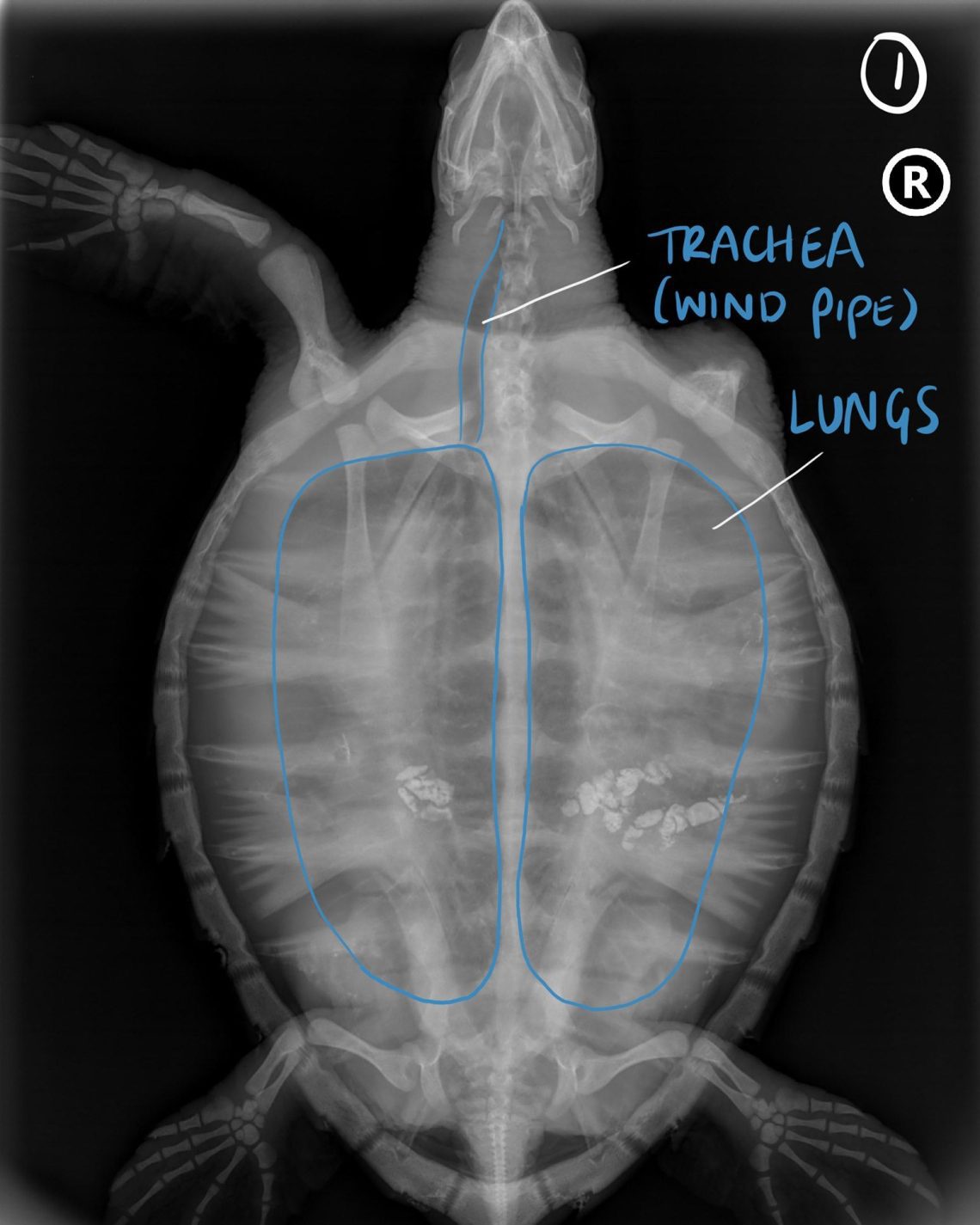
Turtle pneumonia (pneumonia)
Symptoms: does not drown, rolls over on one side, does not eat, sits on the shore, breathes through the mouth, blows bubbles, wheezes, pale mucous membranes, mucus from the nose and / or trachea Turtles: more often water Treatment: self-curable, fatal if delayed
Pneumonia is a typical form of diseases of the lower respiratory tract.
With pneumonia (inflammation of the lungs), aquatic turtles tend to swim on their side, but swimming on their side without a runny nose can be a sign of bloating (tilt of the turtle’s body to the left), or expansion of the stomach (tilt of the turtle’s body to the right). Pneumonia stage I
– “wet” or “exudative” pneumonia – occurs suddenly and is acute.
Reasons 1: It is usually caused by short-term keeping of turtles at low temperatures, without food and in crowded conditions – that is, during transportation, overexposure, trade in a cold room, on the street or market, etc. The disease can manifest itself after 3 to 4 days and in some cases lead to death within days or even hours.
Symptoms 1: The turtle may refuse food, become lethargic and lethargic. Aquatic turtles spend more time on land, land turtles stop returning to a stationary shelter (if any) or do not go out to heat at all. If such a turtle is gently “clicked” on the nose, then with a sharp removal of the head, a vibrating, gurgling sound can be heard, reminiscent of a wet rattle. Transparent, slightly stretchy exudate can be found in the oral cavity and in the choanae. In the future, the accumulation of exudate in the lungs and in the upper respiratory tract can cause suffocation. Excessive exudate can sometimes be released from the mouth or nostrils and dry out in the form of whitish crusts, foam. The mucous membranes of the oral cavity and tongue become pale and sometimes cyanotic. In land turtles, activity can increase dramatically: they begin to “run” around the terrarium, make imposed movements, sometimes as if not seeing anything around. Attacks of activity are replaced by periods of depression. In aquatic turtles, swimming qualities are disturbed: with a one-sided process, turtles “fall over” when swimming to the side of the affected lung (where the density of the spongy tissue increases), more often to the left, but can sink to the bottom, unlike tympanum. In many cases, turtles resort to coughing, sneezing, and panting to clear their nostrils or mouth. Turtles can rub their heads with their front paws, a rather hopeless attempt to “cope” with obstructed nostrils.
ATTENTION: The treatment regimens on the site can be obsolete! A turtle can have several diseases at once, and many diseases are difficult to diagnose without tests and examination by a veterinarian, therefore, before starting self-treatment, contact a veterinary clinic with a trusted herpetologist veterinarian, or our veterinary consultant on the forum.
Treatment 1: Symptoms may disappear after the first antibiotic injection (usually within a few hours). The main drug is baytril (2,5% baytril, at a dose of 0,4 ml / kg every other day in the shoulder muscle). Reserve group drugs – oxytetracycline, ceftazidime (20 mg/kg every 72 hours), ampiox-sodium at doses of 200 mg/kg intramuscularly, levomycetin-succinate. If therapy does not cause a clear improvement within 3 to 4 days, it is better to prescribe aminoglycosides. During treatment, the turtle must be kept at daytime temperatures not lower than 30-32 ° C. Baytril’s analogue is enroflon (veterinary) or amikacin (10 mg / kg every other day), but then it is necessary in parallel with injections of Ringer’s solution. For treatment you need to buy:
- Baytril 2,5% | 1 vial | veterinary pharmacy
- Ringer-Locke solution | 1 vial | veterinary pharmacy
- Glucose | 3-4 ampoules | human pharmacy
- Syringes 0,3 ml, 1 ml, 5-10 ml | human pharmacy
Pneumonia stage II
– “dry” or “purulent” pneumonia – develops with stabilization of stage I pneumonia or occurs as an independent process.
Reasons 2: Prolonged or abrupt cooling combined with dehydration.
Symptoms 2: The turtle refuses to feed, later the turtle becomes inactive, quickly loses weight and becomes dehydrated. Hanging of the head and incomplete retraction of the limbs, expiratory shortness of breath (after increased exhalation associated with stretching (sometimes tipping) of the head and opening the mouth, a loud click and a prolonged squeak, audible even from a distance of several meters), throat, nasopharynx, choanae are clogged with large yellowish – greenish flakes of pus, which can cause asphyxia in turtles.
Treatment 2: Keeping turtles at temperatures corresponding to the highest limit of the optimum (about 32°C). In case of dehydration, prescribe warm baths, administer rehydrating solutions with caution, not exceeding 1-2% of body weight per day. Definitely veterinary care!
Treatment should continue until the appearance of positive dynamics on the radiograph. Ideally, the tortoise begins to feed on its own after 2 weeks of therapy. With insufficient duration of treatment, the acute course of stage II pneumonia often becomes chronic.
The X-ray shows a dark and a light lung. Clean lungs look transparent on x-rays, while infected lungs look sick and cloudy. It is difficult to identify pneumonia in small turtles in the picture. Breathing problems can cause the female’s eggs to press on the lungs.
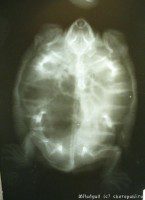
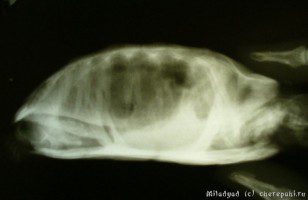
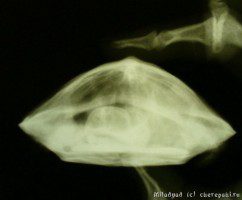
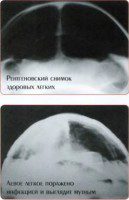
Mycotic pneumonia (systemic mycoses)
Specific mycotic pneumonia in turtles is quite rare.
The reasons: This form of pneumonia is typical for immunosuppressed animals kept in unsuitable conditions. The “risk group” usually includes desert species of turtles, which are kept at high humidity and on soil contaminated with light organic material that forms dust (sawdust, peat, compound feed such as alfalfa balls, etc.); animals that have been treated with antibiotics for a long time, vitamin deficiency. Most often, mycosis of the lungs complicates primary bacterial pneumonia, especially with long courses of antibiotic therapy. Bog turtles kept with ornamental fish may be infected with them.
Symptoms: The diagnosis is difficult to make on clinical grounds. Mycotic pneumonia can be assumed if antibiotic therapy has no effect, and this type of turtle is included in the “risk group”. Water and land turtles are equally susceptible to this disease.
Treatment: In this case, prevention plays an important role. Treatment is ineffective, but you still need to contact your veterinarian.



